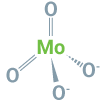Merci !
Nous avons bien reçu votre demande d'inscription et nous vous enverrons un e-mail dans les plus brefs délais, pour confirmer votre adresse e-mail.
Veuillez terminer l'enregistrement en cliquant sur le lien dans cet e-mail.
Politique de confidentialité
L’administrateur de vos données à caractère personnel est LAT Nitrogen Austria GmbH, (gdpr@lat-nitrogen.com). Les informations détaillées relatives au traitement des données à caractère personnel sont consultables dans notre politique de confidentialité. Ces informations vous seront également communiquées dans l’e-mail de confirmation d’inscription à notre newsletter.
Veuillez confirmer que vous avez lu et donnez votre accord avec la politique de confidentialité avant de poursuivre.
Comment pouvons-nous encore vous aider ?
Nous serions heureux de vous envoyer par e-mail des informations sur nos activités, nos meilleures offres et actualités relatives à nos produits et services. Nous traiterons vos données à caractère personnel avec le plus grand soin. Nous ne vendrons jamais vos données à des parties tierces. En cochant les cases ci-dessous, vous confirmez votre accord pour recevoir des communications à des fins de marketing de la part de Borealis L.A.T GmbH
Vous pouvez changer d’avis à tout moment en cliquant sur le lien pour vous désabonner au bas de notre newsletter ou dans tout autre e-mail que vous recevez de notre part, ou en nous contactant à l’adresse gdpr@lat-nitrogen.com.
Merci !
Nous avons bien reçu votre demande d'inscription et nous vous enverrons un e-mail dans les plus brefs délais, pour confirmer votre adresse e-mail.
Veuillez terminer l'enregistrement en cliquant sur le lien dans cet e-mail.
L'inscription a échoué.
Votre e-mail est déjà enregistré
ou il y a eu une erreur de serveur.




Molybdenum
(Mo)
Hautement
Moyennement
Modérément
| Mo | ||
|---|---|---|
| Chou | ||
| Lettue | ||
| Orge de printemps | ||
| Orge d | ||
| Betterave sucrière | ||
| Tomate | ||
| Colza d | ||
| Cerise et cerise acide | ||
| Carotte | ||
| Concombre | ||
| Pomme | ||
| Vignes | ||
| Poire | ||
| Maïs grain | ||
| Maïs ensilage | ||
| Pomme de terre | ||
| Fraise | ||
| Tomate | ||
| Lin Fibre | ||
| Tournesol | ||
| Blé d |
Les symptômes de déficience en molybdène se caractérisent, sur les légumineuses, par des symptômes de carence en azote. Le molydbène étant nécessaire à l’activité de la nitrogénase et la fixation de N2, une déficience est alors constaté. Sur les crucifères, des plages chlorotiques internervaires apparaissent sur les feuilles, qui ont un aspect grisâtre, une consistance molle. Dans les cas les plus graves, le limbe de la feuille n’est pas formé, seule reste la côte de la feuille.
L’excès de molybdène bloque le cuivre et peut induire des carences en céréales et en graminées fourragères. Des cultures acidophiles, comme l’hévéa sont sensibles à tout excès de molybdène.
LAT Nitrogen Austria GmbH
St.-Peter-Strasse 25
4021 Linz, Autriche